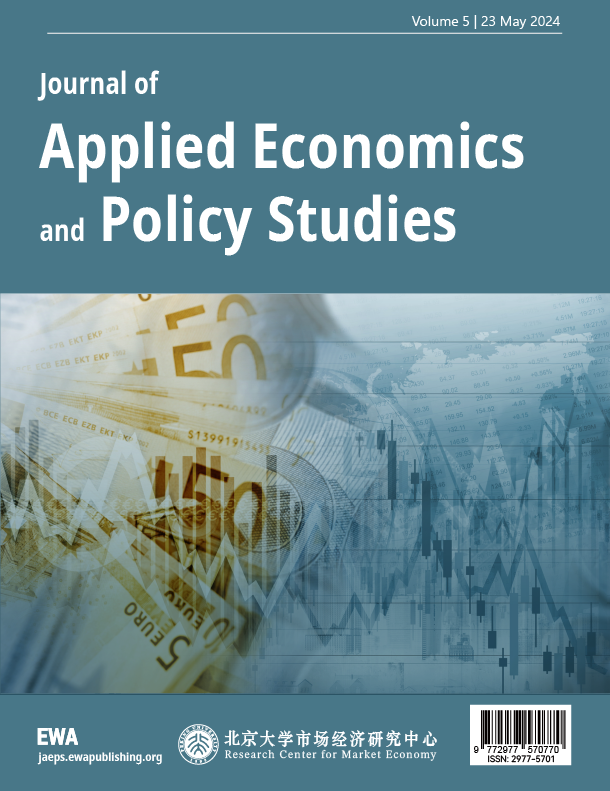References
[1]. Yin, Y., & Xu, Z. (2022). The coupling synergy effect of economic and environment in developed area: An empirical study from the Yangtze River Delta urban agglomeration in China.International Journal of Environmental Research and Public Health,19(12), 7444. https: //doi.org/10.3390/ijerph19127444
[2]. Zhu, K., & Sun, W. (2023). Collaborative agglomeration level and spatial correlation of intercity manufacturing industry: An empirical study based on the cities of the Yangtze River Delta. [Journal name not provided].
[3]. Wang, Z., Zhou, S., & Wan, F. (2024). Spatial distribution and collaborative agglomeration of manufacturing and producer services in the Nanjing metropolitan area.Yunnan Geographic and Environmental Research,36(03), 1–8+16.
[4]. Wen, Q., & Ma, H. (2022). Analysis of industrial collaborative development level in the Urumqi metropolitan area: Based on order degree and composite system synergy model.National Circulation Economy,(01), 133–136.
[5]. Zhang, J., Shan, Y., Jiang, S., Xin, B., Miao, Y., & Zhang, Y. (2024). Study on the coordinated development degree of new quality productivity and manufacturing carbon emission efficiency in provincial regions of China. [Journal name not provided].
[6]. Zeng, P., Wei, X., & Duan, Z. (2022). Coupling and coordination analysis in urban agglomerations of China: Urbanization and ecological security perspectives. https: //doi.org/10.1016/j.jclepro.2022.132730
[7]. Liu, K., & Liu, X. (2024). Spatial spillover effects of industrial collaborative agglomeration on new-type urbanization: Evidence from the Yangtze River Economic Belt.Productivity Research, (04), 12–16.
[8]. Wang, Y., Xu, J., & Liu, D. (2023). Spatiotemporal characteristics of built-up area expansion in the Nanjing metropolitan area based on industrial development big data.Tropical Geography,43(05), 821–836.
[9]. Xu, H., Li, H., & Liu, W. (2021). A 15-year study of regional green space change in the Nanjing metropolitan area.Journal of Northwest Forestry University,36(05), 215–222.
[10]. Revilla Diez, J. (1999). Innovative networks in manufacturing: Some empirical evidence from the metropolitan area of Barcelona. https: //doi.org/10.1016/S0166-4972(99)00112-1
[11]. Simachev, Y., Fedyunina, A., Yurevich, M., Kuzyk, M., & Gorodny, N. (n.d.). New strategic approaches to gaining from emerging advanced manufacturing markets. Center for Industrial Policy Studies, National Research University Higher School of Economics, Moscow, Russia.
[12]. Ge, W. J. (2022). Nanjing metropolitan area: History, development, and prospects.China Investment (Bilingual Edition), (Z3), 56–63.
[13]. Cao, D., Zhang, Y., & Yan, C. (2022). Regional development report of the Nanjing metropolitan area.Statistics Science and Practice, (09), 47–50.
[14]. Chen, F. Y. (2022). Are industrial structures complementary among cities in the Nanjing metropolitan area? An empirical study based on industrial coordination evaluation.Journal of Jinling Institute of Technology (Social Science Edition), 01, 9–16. https: //doi.org/10.16515/j.cnki.32-1745/c.2022.01.002
[15]. Wei, S., & Qian, F. (2021). Economic integration development and optimization strategies of the Nanjing metropolitan area.New Finance,(09), 24–29.
[16]. Hu, X. E. (2023). Research on coordinated development of logistics and manufacturing from the perspective of spatial agglomeration.Commercial Economic Research, (22), 180–183.
[17]. Wang, S. (2024). Effects of coordinated agglomeration of logistics and manufacturing on high-quality development of commerce and trade circulation.Commercial Economic Research,(07), 171–174.
[18]. Ding, B. Y. (2018). Pharma Industry 4.0: Literature review and research opportunities in sustainable pharmaceutical supply chains. https: //doi.org/10.1016/j.psep.2018.06.031



